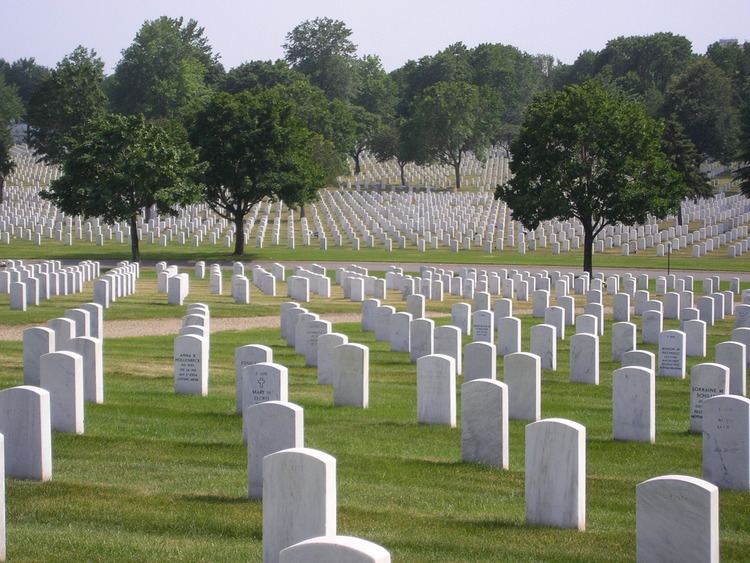Established 1939 Country United States Size 436.3 acres (176.6 ha) Founded 1870 | Type Public No. of graves 220,000 Phone +1 612-726-1127 | |
 | ||
Address 7601 34th Ave S, Minneapolis, MN 55450, USA Hours Closed now Tuesday8AM–4:15PMWednesday8AM–4:15PMThursday8AM–4:15PMFriday8AM–4:15PMSaturdayClosedSundayClosedMonday8AM–4:15PM Similar Fort Snelling, Lakewood Cemetery, Calverton National Cemetery, Fort Snelling Memorial, Minneapolis Pioneers and Soldi | ||
Fort snelling national cemetery minneapolis
Fort Snelling National Cemetery is a United States National Cemetery located in the city of Minneapolis in Hennepin County, Minnesota. It is the older of the two national cemeteries in the state. Administered by the United States Department of Veterans Affairs, it encompasses 436.3 acres (176.6 ha), and as of 2016 had 220,000 interments. It was listed on the National Register of Historic Places in 2016.
Contents
History
Fort Snelling was a frontier fort first established in 1819. Its original purpose was to keep the peace on what was then the western frontier. During the American Civil War it served as a recruiting camp area for Minnesota volunteers. The cemetery was officially established in 1870.
In 1937, the citizens of St. Paul, petitioned Congress to construct a National Cemetery in the area. Two years later, the new plot was dedicated, and the burials from the original post cemetery were moved to it. In 1960, the Fort Snelling Air Force Station transferred 146 acres (59 ha) to the cemetery; another 177 acres (0.72 km2) were acquired in 1961, expanding the cemetery to its current size.
